Embroidery, a timeless craft that weaves threads into intricate patterns, holds a rich cultural significance and artistic expression history.
Within the vast realm of embroidery, three particular kinds stand out for their unique techniques and captivating aesthetics.
In this exploration, we discover what are the 3 special kinds of embroidery, each carrying its tale of craftsmanship and creativity.
From the delicate stitches that tell stories on fabric to the mastery of needlework passed down through generations, these three particular kinds of embroidery showcase the diversity and artistry embedded in this age-old tradition.
Whether you’re a seasoned enthusiast or a newcomer eager to unravel the secrets of needle and thread, join us to discover the distinctive charm that sets these embroidery styles apart.
Let’s unravel the threads and explore the intricate beauty that defines these three particular kinds of embroidery.
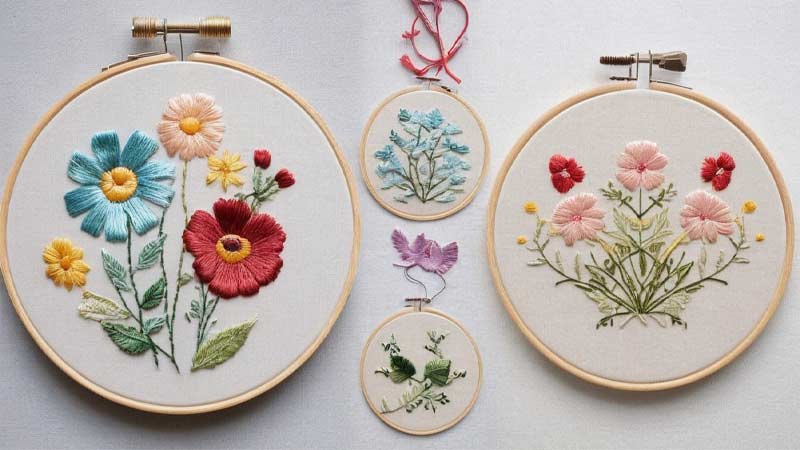
What Are The 3 Special Kinds Of Embroidery?
Let’s delve into the fascinating world of these different kinds of embroidery: counted-thread embroidery, Crewelwork, and stumpwork.
Counted-Thread Embroidery
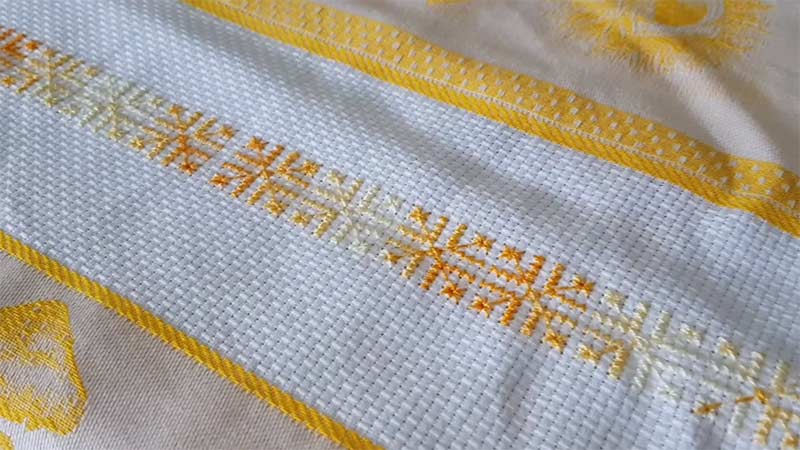
Counted-thread embroidery is a technique that involves creating intricate patterns by counting the threads in the fabric.
This meticulous approach results in precise and symmetrical embroidery designs, making it a popular choice for creating elegant and detailed works of art.
Cross-stitch is one of the most well-known forms of counted-thread embroidery, where X-shaped stitches form a pattern on even-weave fabric. This method allows for a wide range of geometric patterns and intricate motifs.
Crewelwork
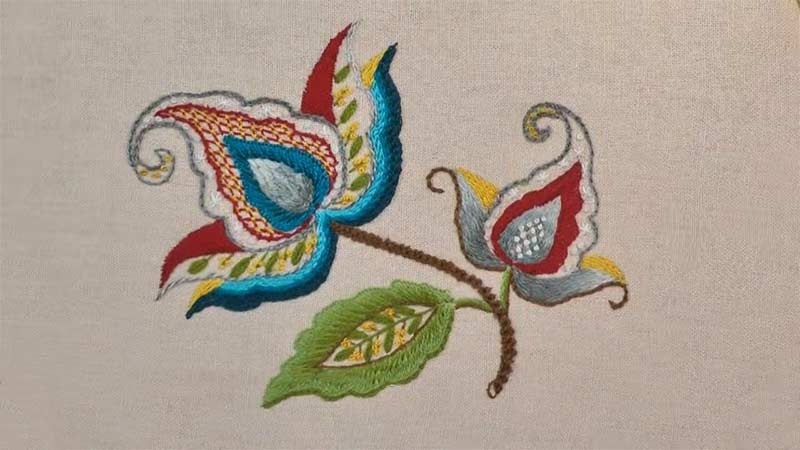
Crewelwork, characterized by its use of wool yarn on a plain fabric, is a form of surface embroidery that flourished during the Jacobean era in England.
This style is known for its vibrant colours, rich textures, and intricate motifs, often featuring floral and scrolling designs. The wool thread gives Crewelwork a three-dimensional quality, adding depth and warmth to the embroidered surface.
Historically, this has been a particular type of embroidery that adorned various household items such as bed hangings, curtains, and upholstery, showcasing the luxury and sophistication of the era. Today, this embroidery style continues to captivate artisans and enthusiasts alike.
Stumpwork
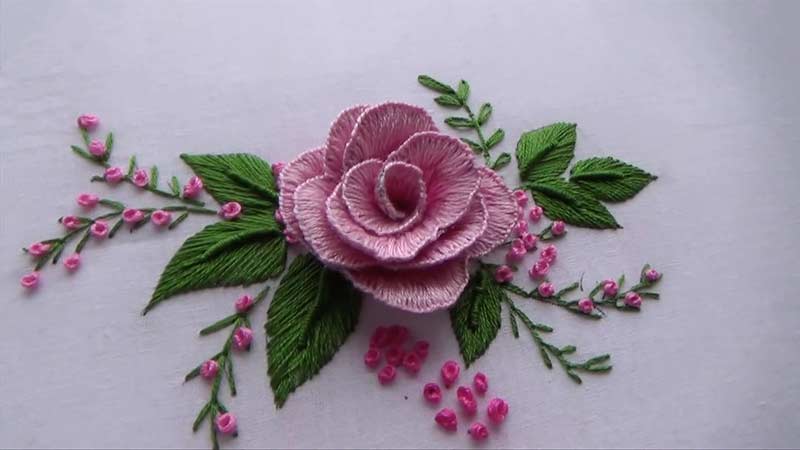
Stumpwork, an enchanting form of embroidery that originated in 17th-century England, literally takes embroidery to a whole new dimension.
This style involves creating raised and three-dimensional elements on the fabric, adding a sculptural quality to the piece.
Stumpwork often incorporates wire, padding, and other materials to develop lifelike shapes such as flowers, insects, and figures.
Stumpwork pieces are visually striking and tactile, inviting viewers to appreciate the craftsmanship and effort put into creating these miniature works of art.
How to Choose from the 3 Types of Embroidery?
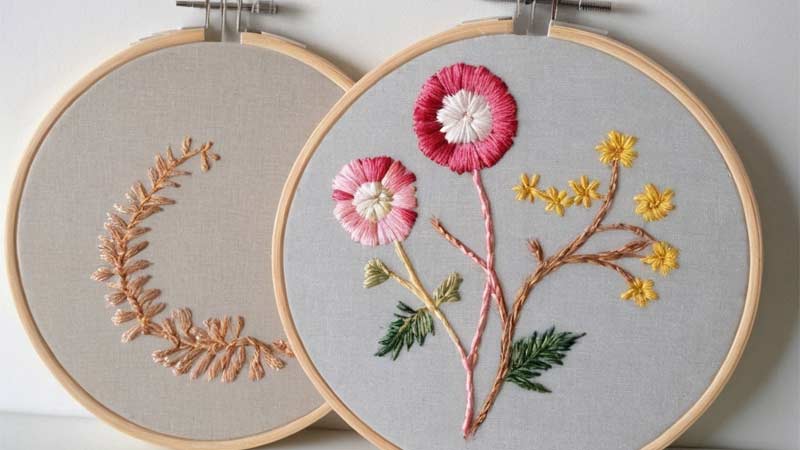
Choosing the right embroidery style depends on various factors, including personal preferences, project goals, and skill level. Here’s a guide to help you make an informed decision:
Understand Your Project
Consider the type of project you’re working on. Are you creating a delicate sampler, embellishing clothing, or adding dimension to a piece of art? The nature of your project can guide your choice.
Skill Level
Assess your embroidery skills. Counted-thread embroidery, with its precision, might be suitable for those who enjoy detailed work and have experience with stitching.
With its colourful and free-form nature, Crewelwork can be more forgiving for beginners. Stumpwork involving three-dimensional elements may require additional skills and experimentation.
Aesthetic Preferences
Explore your aesthetic preferences. Countless-thread embroidery might be appealing if you enjoy geometric patterns and meticulous designs. Crewelwork could be a good fit if vibrant colours and flowing motifs attract you.
Stumpwork may be the ideal choice for those who appreciate a sculptural quality in their embroidery.
Project Size and Time Commitment
Consider the size and time commitment of your project. Counted-thread embroidery, especially intricate patterns, may take longer to complete.
Crewelwork allows for quicker progress with its larger stitches, while dimensional stumpwork can be time-intensive.
Historical or Modern Appeal
Think about the historical or modern appeal you want to achieve. Counted-thread embroidery often exudes a classic and timeless elegance.
Crewelwork can bring a touch of historical charm or be adapted for contemporary designs. Stumpwork offers a blend of traditional and modern sculptural elements.
Experiment and Combine
Don’t limit yourself to just one style. Experiment with different techniques and consider combining them for a unique look.
For instance, you can incorporate crewelwork flowers into a counted-thread design or add stumpwork elements to enhance texture.
Available Resources
Consider the availability of resources, including materials and tutorials. Some embroidery styles may require specific threads, fabrics, or tools. Ensure you can easily access the necessary resources for your chosen technique.
Personal Preferences
Follow your passion. If a particular style speaks to or excites your creativity, it will likely result in a satisfying and enjoyable embroidery experience.
Remember, there’s no strict rule, and choosing the right embroidery style is ultimately a personal decision. Feel free to explore, experiment, and let your creativity guide you as you embark on your embroidery journey.
Different Ways to Create Various Types of Embroidery on Clothes
Embroidering clothes opens a world of creative possibilities, allowing you to personalize and enhance garments with unique designs.
Here are various ways to create different types of embroidery on clothes, each offering its techniques and aesthetic appeal.
1. Hand Embroidery
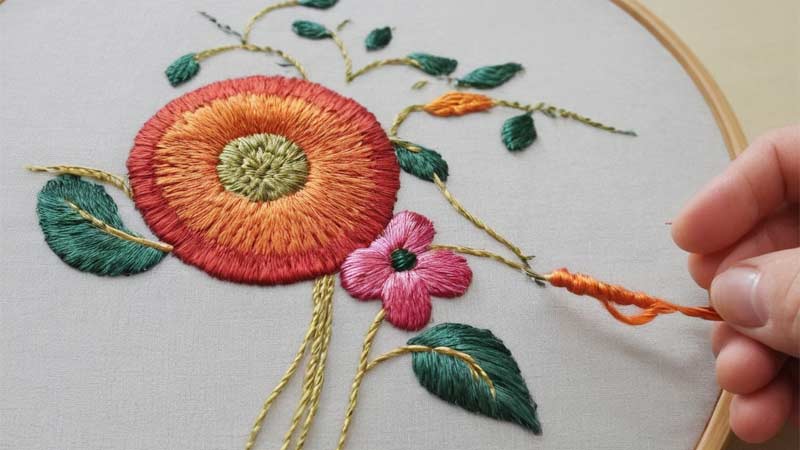
Hand embroidery is a traditional and versatile method that involves stitching intricate designs using a needle and embroidery floss.
This technique allows complete control over stitching, making it suitable for detailed patterns and fine craftsmanship.
Common hand embroidery stitches include satin stitch, chain stitch, and backstitch, each contributing to various textures and effects.
2. Machine Embroidery
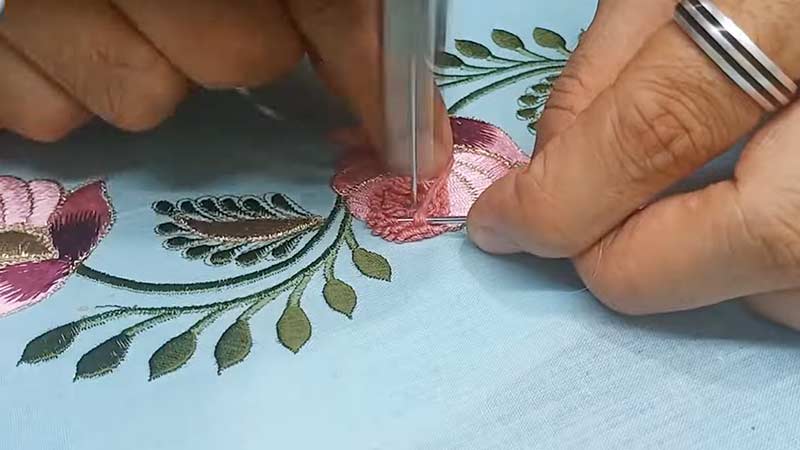
Machine embroidery employs computerized sewing machines programmed to stitch intricate designs automatically. This method is ideal for creating precise and repetitive patterns with speed and efficiency.
Designs can be digitized and uploaded to the embroidery machine, which executes the stitches following the programmed instructions. Machine embroidery is commonly used for logos, monograms, and larger designs.
3. Appliqué
Appliqué involves attaching fabric pieces onto a base fabric to create a design. This technique adds texture and dimension to embroidery, allowing for different fabrics, patterns, and colours.
Appliqué is often combined with other embroidery methods to enhance the overall visual impact.
4. Cross-Stitch
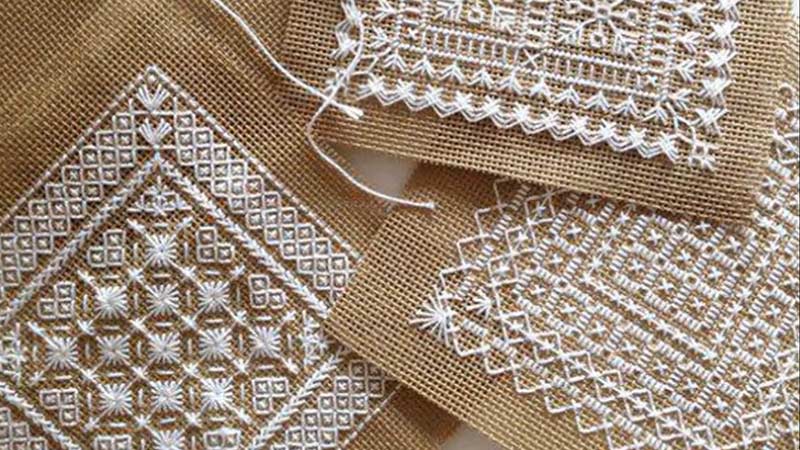
Cross-stitch is a form of counted-thread embroidery characterized by X-shaped stitches. This method often creates intricate patterns and designs on fabric with a grid-like structure. Cross-stitch designs can range from simple geometric shapes to elaborate scenes.
5. Ribbon Embroidery
Ribbon embroidery involves using ribbons instead of traditional embroidery floss to create textured designs on fabric. This method adds a luxurious and three-dimensional quality to embroidery.
Ribbon embroidery is often used to embellish formal wear, wedding dresses, and other garments where a touch of elegance is desired.
6. Bead Embroidery
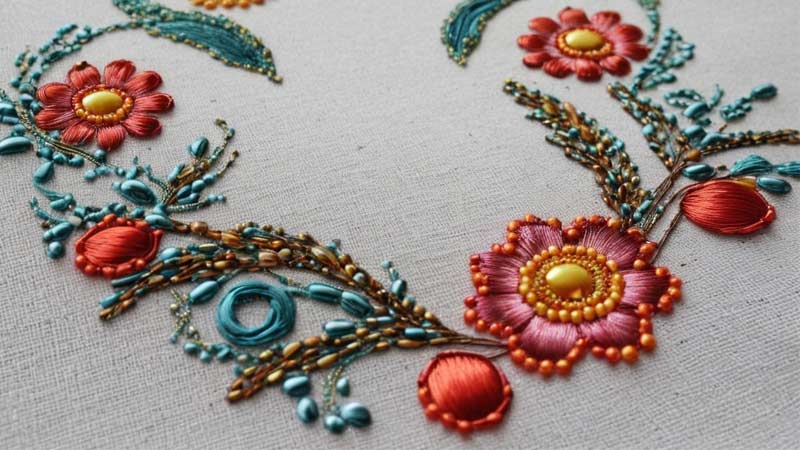
Bead embroidery involves attaching beads to fabric using various stitches, creating a shimmering and textured effect. This technique adds a touch of glamour to clothing, making it famous for embellishing evening wear, accessories, and costumes.
7. Free-Motion Embroidery
Free-motion embroidery involves using a sewing machine with the feed dogs lowered, allowing the fabric to be moved freely in any direction.
This method is akin to drawing with the sewing machine needle, enabling artists to create unique and expressive designs.
8. Stencil Embroidery
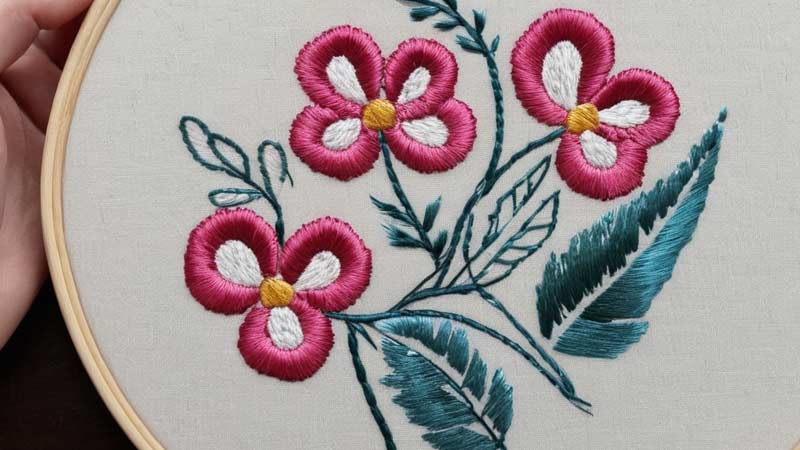
Stencil embroidery involves using pre-cut stencils to guide the placement of stitches, making it an accessible method for both beginners and experienced embroiderers. This technique allows for quick and consistent replication of designs.
Choosing the Right Technique for Your Project
When deciding which embroidery technique to use on clothes, consider factors such as the fabric type, the desired level of detail, and the overall aesthetic you want to achieve.
Whether you opt for the meticulous craftsmanship of hand embroidery, the precision of machine embroidery, or the dimensional effects of appliqué, each method offers a unique avenue for expressing your creativity.
FAQs
What are the essential tools needed for hand embroidery on clothes?
To hand embroider clothes, you’ll need essential tools such as embroidery needles, embroidery floss in various colours, an embroidery hoop to secure the fabric, and a pair of small, sharp scissors.
Can I use any fabric for embroidery on clothes?
While you can technically embroider on various fabrics, choosing fabrics with a tight weave to support the stitches is recommended. Cotton, linen, and denim are popular choices. Avoid stretchy or sheer fabrics, making the embroidery process more challenging.
Is machine embroidery suitable for beginners?
Machine embroidery can be suitable for beginners, especially with user-friendly embroidery machines. Many machines come with pre-programmed designs, making it easier to get started.
How do I prevent beads from falling off bead embroidery on clothes?
Secure each bead tightly with your stitches to prevent beads from falling off during wear. Double-threading your needle or tying knots between beads can add extra security.
Can I wash clothes with embroidered designs?
Yes, you can wash clothes with embroidered designs, but following care instructions is crucial. Hand-wash delicate embroidered items in cold water with mild detergent, and avoid wringing or twisting. If the garment allows, turn it inside out before washing.
Conclusion
The world of embroidery unfolds as a canvas of artistic marvels, and the exploration of the three particular kinds has been a testament to the boundless creativity within this craft.
From the meticulous precision of counted-thread embroidery to the vibrant storytelling of Crewelwork and the timeless elegance of stumpwork, each style encapsulates a unique narrative stitched with passion and skill.
Embroidery, in all its forms, continues to bridge the past with the present, connecting cultures and communities through the language of thread.
As we conclude our journey through these three particular kinds of embroidery, we invite you to pick up a needle, embrace the tactile beauty of textiles, and embark on your creative odyssey.
May your stitches tell stories, and the artistry of embroidery weave threads of inspiration into the fabric of your narrative. The world of needle and thread awaits, ready to unfold a new chapter of craftsmanship.
Leave a Reply